How Long Do Brake Pads Last? Factors, Types, & Longevity
-
Pete Ortiz
- Last updated:
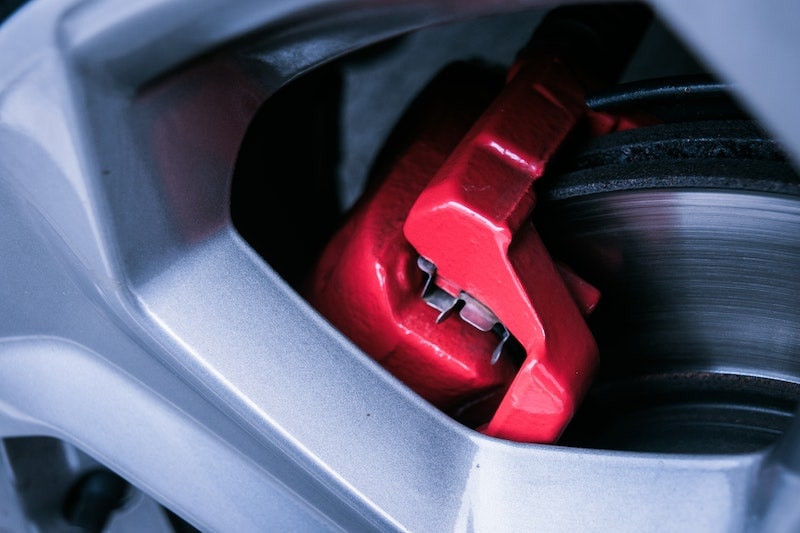
Brake pads are the most replaced components in a vehicle braking system. Using mileage is the best way to determine how long you should use the same brake pads. Vehicle brake pads should be able to serve you for about 25,000 to 65,000 miles.
Brake pads are found inside the disc brakes and work with the rotor and caliper to halt the motion of a car when prompted. Since these moving components work when driving at high speeds, they should be sturdy enough to withstand the friction generated. Eventually, you will need to replace the brake pads to maintain the integrity of your braking system. If you regularly replace the brake pads, you can significantly extend the life of your rotors and calipers.
In this article, we will discuss the composition and lifespan of the different types of brake pads. Read on to learn more.
What Are the Different Types of Brake Pads?
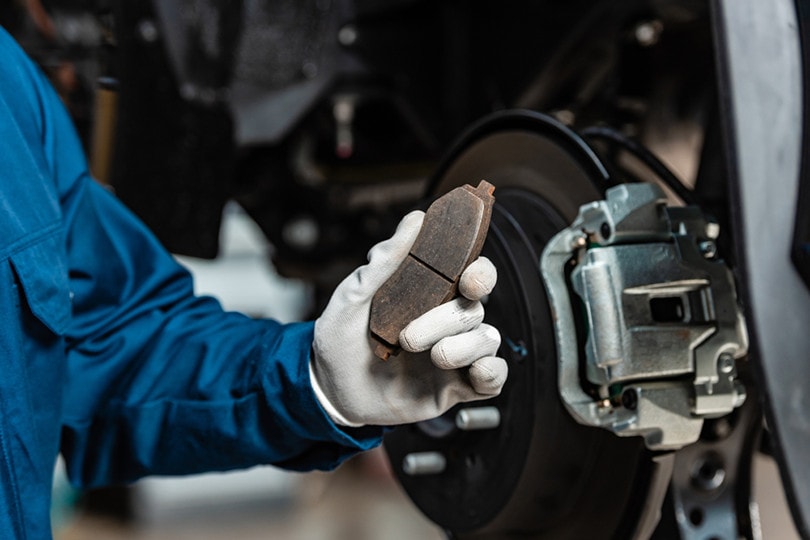
Before we discuss the lifespan of vehicle brake pads, we first need to highlight the most common types of brake pads based on the materials used. They include ceramic, semi-metallic, organic, and non-asbestos organic.
- Semi-Metallic. This brake pad has a composition of 30% to 65% metal. It is very durable with excellent motion-deterring abilities. Semi-metallic brake pads are cheaper than other materials and excel in performance. However, they do not offer better friction resistance and comfort when driving. Furthermore, they are louder than other brake pad types. These are often used in high-performance vehicles like sports cars.
- Non-Asbestos/Organic. This type of brake pad is also made from organic materials such as fiber Kevlar, glass, and rubber. They are a better alternative to the other loud brake pads because they are quieter. They may be inexpensive but not as durable as the metallic variants. Furthermore, they pollute the environment with the brake dust produced and more frequent wear and tear.
- Low-Metallic Non-Asbestos Organic (NAO). This is a great braking pad option for vehicles that produce a lot of heat while braking. They perform better when installed with a steel or copper build for heat dissipation. They may be noisy and produce a lot of brake dust, but this type of brake pad is cheaper and offers great durability.
- Ceramic. Ceramic is perhaps the most popular brake pad option among car owners. They essentially solve all the other issues present in the other brake pad variants. They are quiet, dust-free, durable, and ideal for almost any type of vehicle except industrial vehicles and supercars. The only con is that they are quite expensive. However, this is a better trade-off due to their longevity.
How Long Do Brake Pads Last?
Usually, brake pads can wear out to the point of replacement at least 30,000 miles. This is indicated by a squeaking sound emanating when you step on the brake pedal. However, not all brake pads are made the same. The type of pad installed in your car will determine their replacement schedule.
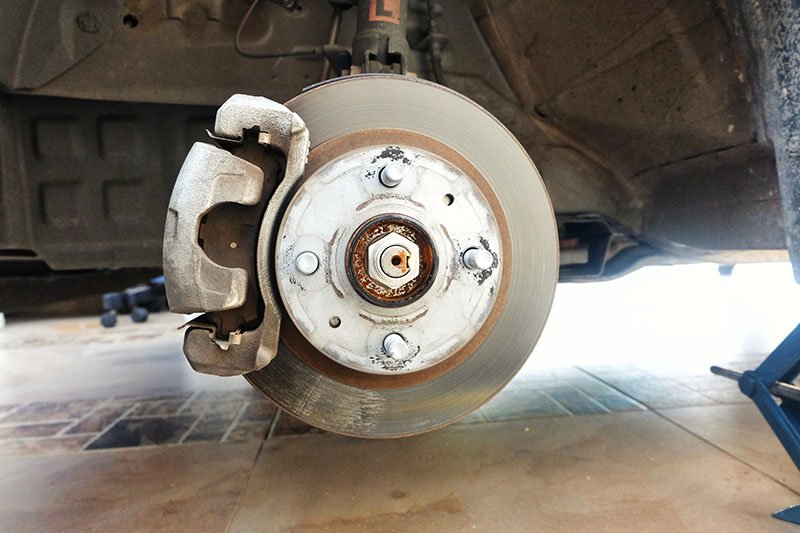
1. Organic Brake Pads
Also known as non-asbestos brake pads, organic brake pads are made from organic composite materials that are sturdy enough to withstand high-heat environments.
Of all the brake pad variants, the organic brake pad wears out the quickest because it comprises fewer pollutants. But the lack of pollutants may be beneficial to some consumers because they don’t harm the environment. Also, they are easier to dispose of, despite the fact they are messier to replace compared to other brake pad varieties.
Organic brake pads are, however, not suitable for installation in heavier vehicles like trucks and high-performance vehicles. They are best suited for smaller cars that do not experience a lot of sudden stopping (like in bumper-to-bumper traffic) and weigh less than other cars on the road. A car that is used to run daily errands and has less aggression should be able to maintain organic brake pads for a while. They will need replacement after every 25,000 miles.
2. Semi-Metallic Brake Pads
These are some of the most common brake pads you can find on any car on the road. They have gained a mid-grade status in the automotive world and are considered cost-effective.
At first glance, these brake pads may be just two pieces of metal mounted on the rotors of the braking system. Yet, the reality is that metallic brake pads comprise composite materials, including steel, iron, copper, and even graphite molded together to make each brake pad.
Metallic brake pads are an ideal choice for high-performance vehicles. Due to their enhanced durability and sturdy makeup, they work great with racing cars or any form of aggressive driving. They are also suitable for trucks and other heavy vehicles on the road. They can withstand the heat generated by friction longer than other brake pads, making them a suitable choice when it comes to stopping bigger forms of transportation.
On the flip side, metallic motors tend to harm the brake rotors after some time. Since the brake pad material is so durable, it will also contribute to the wear and tear of the rotors over time. When these pads are replaced regularly, the rotors will remain in optimum conditions for more miles. A good set of metallic miles should offer you decent mileage. You can drive for at least 30,000 miles without replacing your metallic brake pads.
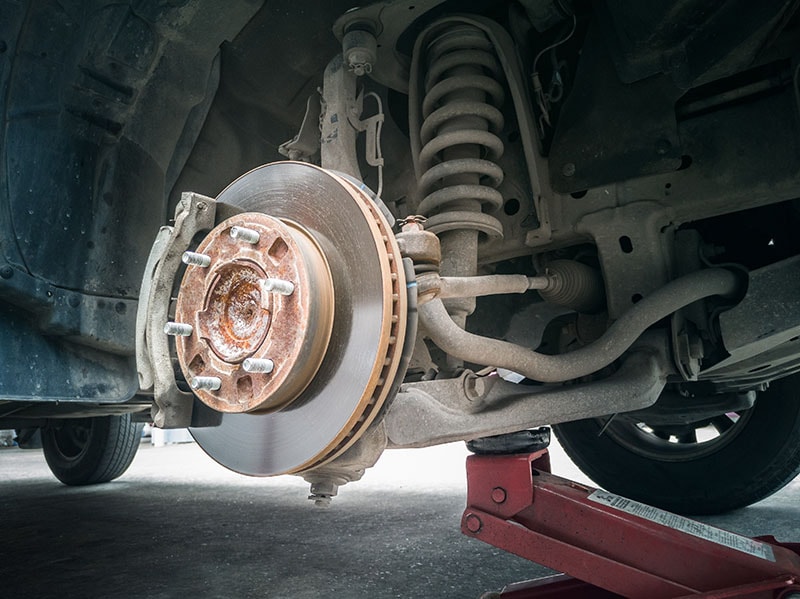
3. Ceramic Brake Pads
This type of brake pad was first released in 1980. Initially, it was manufactured with composites of highly durable copper fibers and ceramic to increase the stopping ability and longevity. However, due to the softer makeup, they are not ideal for use in aggressive driving or high-performance vehicles. The ceramic brake pads will wear out faster than metallic materials when used in off-road driving or racing. The same applies to heavy towing vehicles, which will require frequent replacement.
If you use your car to run every day errands or for leisure driving, ceramic brake pads would be a suitable choice. They don’t create a lot of unnecessary noise, have low dust emissions, and are overly durable. They are also guaranteed to give you great value for your money.
Furthermore, ceramic brake pads can handle the heat generated by the friction in the brake system with better recovery time when preparing to stop again. A decent pair of ceramic pads should be able to last for 30,000 miles without needing replacement. However, they can even serve you for longer mileage if properly maintained, and you adopt proper driving habits.
Factors That Affect the Longevity of Brake Pads
1. Driving Style and Habits
Generally, aggressive driving that involves a lot of hard braking at top speeds tends to wear out the brake pads faster. The brake pads must apply enough friction to the disc brake rotor while hard braking. Consequently, your brake pad will get hotter, thus deteriorating and disintegrating the brake pad to produce brake dust. You can prolong your brake pads by applying softer brakes and driving less aggressively.
2. The Braking System on Your Car
Some of the braking systems used in cars can cause the brake pads to deteriorate faster. Some cars feature traction controls and automatic braking systems that can slow down or stop a moving car without you noticing. In such systems, you don’t have to step on the pedal to arrest motion, so the brake pads will wear out faster.
Furthermore, if you have previously made an emergency stop before by triggering the ABS, consider getting your brake pads checked. The system is notorious for significantly wearing out any type of brake pad.
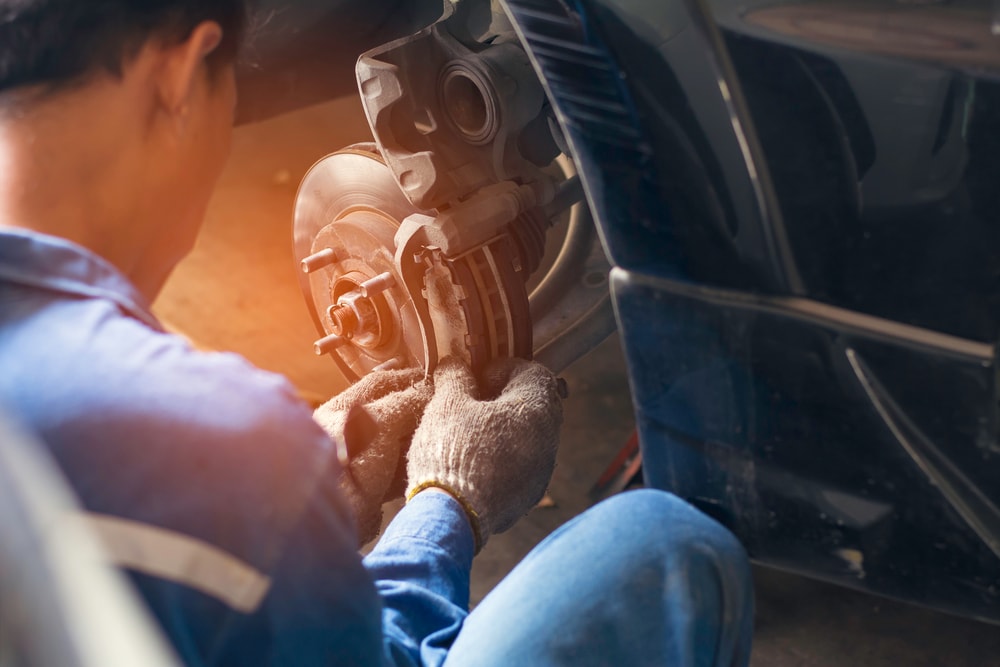
3. Driving Environment
If you live in an overly hilly or mountainous environment, you might be forced to use the brakes more frequently as you rise and drop with the terrain. The same applies to driving in a metropolitan area with a lot of traffic. In a nutshell, the more you use your brake system, the shorter the brake pad life span gets.
Conclusion
Brake pads are essential components of the braking system because they help slow down or stop a car in motion. This is perhaps why most drivers are concerned about the appropriate time to replace brake pads in their vehicles. Usually, a good quality brake pad should be able to serve you between 25,000 and 65,000 miles. However, how long a specific brake pad lasts will depend on several factors.
The type of material used on your brake pad should give you a rough estimate of the mileage you can get from your brake pad. Furthermore, your driving habits and environment will also affect the longevity of your brake pads. To increase the lifespan, ensure that you use a pad that is suitable to your car type and model. Also, avoid aggressive driving if using low-quality pads and practice braking more gently, even in high-traffic areas.
Featured Image Credit: Tuesday Temptation, Pexels
Contents


